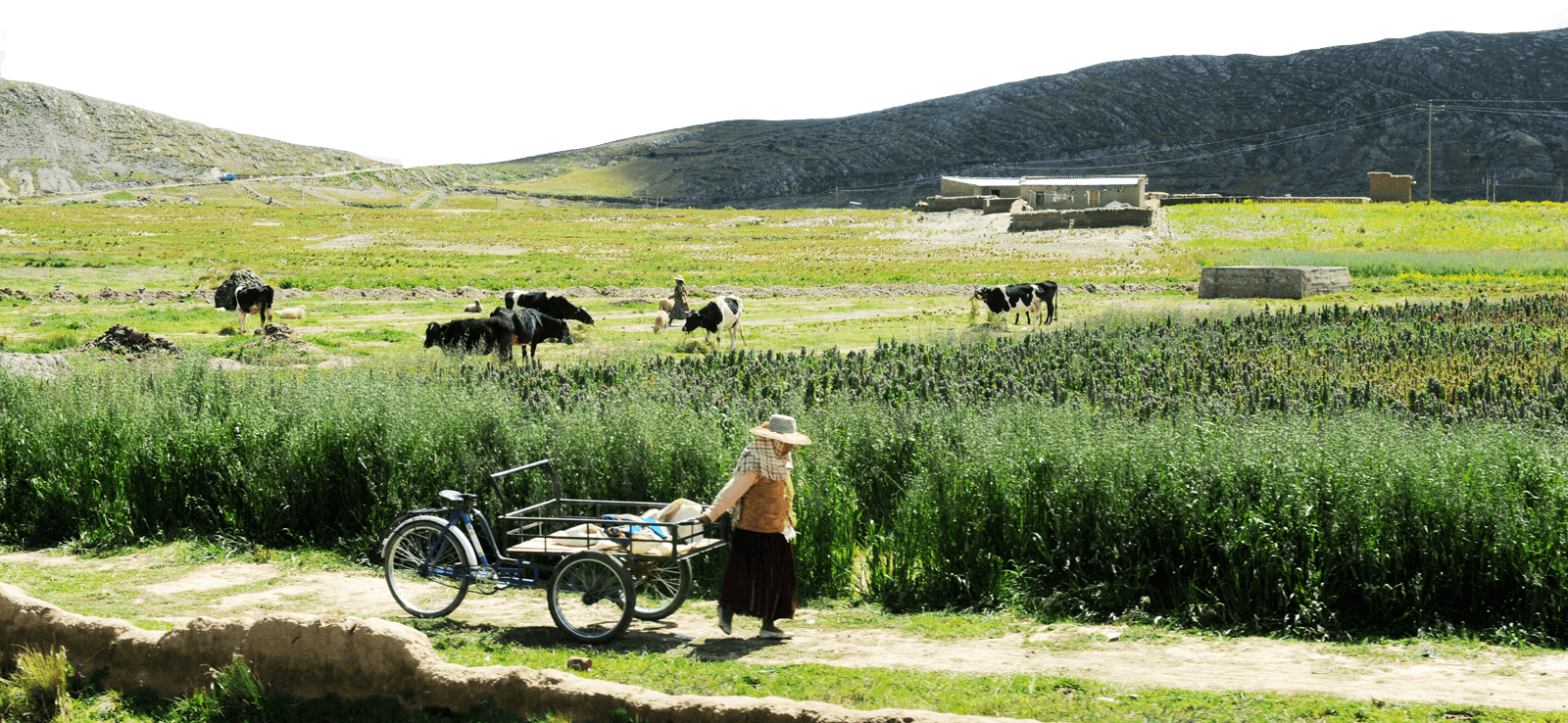Food Workers Have Always Been Essential—Give Them What Is Theirs
The COVID-19 pandemic has revealed how an economic system dependent on low-wage labor creates as many issues as it purports to solve. When profit determines every outcome of social and economic life, working people lose. This reality is on full display in our food system. The novel coronavirus and our food economy are bound together in every regard. As a result, the social and economic aftermath of the virus will have grave implications for our food system—particularly for the workers who keep it in operation. However, as made increasingly evident by the COVID-19 pandemic, it is labor that keeps our food system going. CEOs may keep their salaries and self-isolate in their homes, but it is workers from grocery stores to farm fields who have been revealed to be truly essential. By leveraging their power in a time where the entire country is looking to them for survival, food workers can build the movements that will improve their working conditions well into the future. These changes are not only necessary; they benefit us all.
Free market Food Systems and Exploited Labor
Our capitalist model of food production promotes the low wages that characterize the US labor market, and render American wage workers exceptionally vulnerable to the economic and social effects of pandemics. Since the late 1970s, unmitigated deference to the interests of the market on the part of politicians and policymakers have created the conditions for the disastrous fallout currently on display. Before the virus came roaring onto the scene, 78% of American workers were already in crisis, living paycheck to paycheck, and around 12% were already food insecure. Rev. William Barber II, co-chair of the Poor People’s Campaign, recently pointed out that “The underlying disease… is poverty, which was killing nearly 700 of us every day in the world’s wealthiest country, long before anyone had heard of COVID-19.”
The free market, profit-driven structure of our global food system depends on keeping labor costs low, resulting in companies continuously exploiting workers and denying them basic rights and protections. In these conditions, the production of lucrative commodities will always come before ecological and human health, enriching the privileged elite at the expense of the rest of us. As long as we allow the “free market” (code for corporations, shareholders, and billionaires) to dictate what is and is not tenable for our food system’s workers, the exploitation of human labor will persevere.
The conditions for such exploitation did not emerge naturally. They were created through market-driven policy. When the Federal Reserve introduced draconian monetary policy in 1979, dramatically increasing interest rates (known as the Volcker Shock) to bring down inflation, it greatly weakened labor’s power in the process. The fallout intensified the recession of the 1970s, shuttered industries, and essentially put a halt to the labor militancy that marked the previous decades, as many workers viscerally feared job losses. The subsequent free trade policies and deregulation of industries that marked the next 30 years rapidly drove down union participation. The US food system would end up mirroring the rest of the economy. Processing, warehousing, and retail in the food sector would be transformed by these new economic policies, depressing wages and conditions. New, non-union corporations came to dominate the food system landscape, effectively undermining unionized labor forces. Low wages, debt, and few benefits became commonplace for many working people. Inequality skyrocketed, shifting enormous amounts of power from the working class towards the top, eroding infrastructure and weakening democracy.
These policies helped create the current landscape of poor economic and social outcomes for food workers. From stagnant wages to devastatingly unequal healthcare, these workers across the country are bound in an unspoken “low-wage social contract”. With little to no access to paid sick leave and suitable health insurance, the majority of food workers are caught within a failing healthcare system tailored towards expensive, private care. Over 27 million Americans are uninsured, with millions more underinsured, generating risk for everyone in a pandemic. In the absence of access to sick leave and suitable health insurance, workers, and anyone who comes into contact with them, are placed at increased risk.
These untenable conditions, predominantly affecting the working poor, have become hyper-visible in the current circumstances. In every facet of the food system, low-wage, precarious workers have no choice but to risk exposure in order to put food on their own tables as well as ours. Agricultural workers, truck drivers, grocery store clerks and cashiers, all must continue to risk exposure to COVID-19 in order to keep our food system afloat. And in a food system that relies heavily on the labor of undocumented people and people of color, hazards related to workplace conditions are additionally racialized. The risks posed by the coronavirus pandemic, as well as the risks posed by the related social and economic fallout, will disproportionately be assumed by low-income Black, Brown, and Indigenous people. As a result, the racial and economic inequalities inherent to capitalism become intensified by the coronavirus pandemic. Those already structurally vulnerable to capitalist exploitation continue to be forced to the front lines of the pandemic, both as a result of empty pantries that require restocking, and the necessity to choose between their housing and their health, so long as their employers continue to remain in business.
However, food workers in the service industry, along with local or independent employers, are finding themselves increasingly unemployed in the face of government mandated closures to protect public health. While restaurant and bar owners are facing their own fiscal fragility under the current economic system, their employees are being forced into unemployment in larger and larger numbers.
Stay in the loop with Food First!
Get our independent analysis, research, and other publications you care about to your inbox for free!
Sign up today!Corporations, Worker Vulnerability, and Forced Labor Migration
As corporate food chain employers face expanding needs for labor, and local and independent food service employers are forced to lay off their workforce, what may follow is a forced labor migration into an increasingly consolidated food system. Corporate grocers such as Aldi, Kroger, Walmart and Amazon continue to hire new laborers as their needs expand, while independent food service operations shutter their doors. This potential shift of newly unemployed food workers into an increasingly consolidated food system stands to have ominous implications for worker rights and protections. This swell of newly listed employment vacancies, aimed at vulnerable and desperate workers, are largely listed as 1099 positions, which offer workers few protections, rights, or benefits. This mirrors the trend following the 2009 financial crash, where gig economy and contract workers grew significantly, weakening the collective power of labor even further. The potential transformation of the labor market looming on the horizon after this economic meltdown may be even worse. But food workers are not taking this crisis lying down.
Organized labor, Solidarity, and Resilience
In the face of limited state intervention and support during a time of crisis, community solidarity projects are beginning to emerge. Mutual aid, organizing, the seizure of vacant housing, and calls to action at a policy level are increasing everywhere. In a time of physical distancing, the power of solidarity, mutual aid, and community interdependence is more visible than ever. Our food system is no exception. Workers in every facet of the food system are beginning to leverage collective power to demand improved workplace conditions.
Food workers are being revealed as the system’s foundational force that they are and always have been. The long era of producing profits by making essential parts of society fictionally “cheap” is tearing at its seams. The funds necessary for systemic change are being revealed as readily available, as proven by the multi-trillion dollar bailout from Congress. As a result, working people are imposing new expectations on both their employers, and the government. Food workers in fast food restaurants and processing plants are pushing back against unsafe working conditions and severe exploitation. They are joining the bedrock of our food system, farmworkers, who have been consistently at the forefront of the radical edge of organized labor for the past two decades, struggling for better wages, working conditions, and dignity. This crisis is demonstrating the leverage that organized, collective action by laborers can have over working conditions.
In the not-so-distant past, the labor movement had the power to influence politics and shape working conditions. Conditions today, while terrible in many ways, may once again favor a revitalization of a multi-racial, working class movement. Food workers across the food chain, alongside other essential workers, are positioned to leverage their collective power and place sizable pressure on their employers, as well as Congress.
Uncertainty continues to lie ahead for the food system and the laborers who make it run. Increased corporate power may very well be on the horizon, as capitalism, for all its shortcomings, has continued to be characterized by its persistent and disastrous resilience. However, this crisis makes clear that working people are essential for society to function. This moment could open up possibilities for working people to build power and enact lasting, positive changes, both inside and outside the food system. As always, many are already leading the way. It’s not enough for corporations to call their food workers heroes. It’s time for the corporations that thrive off of low-wage labor to truly value their workers–and compensate them accordingly. If companies won’t give it, workers will have to take it.
Cover photo by Joe Brusky (CC BY-NC 2.0)


 Help Food First to continue growing an informed, transformative, and flourishing food movement.
Help Food First to continue growing an informed, transformative, and flourishing food movement.




